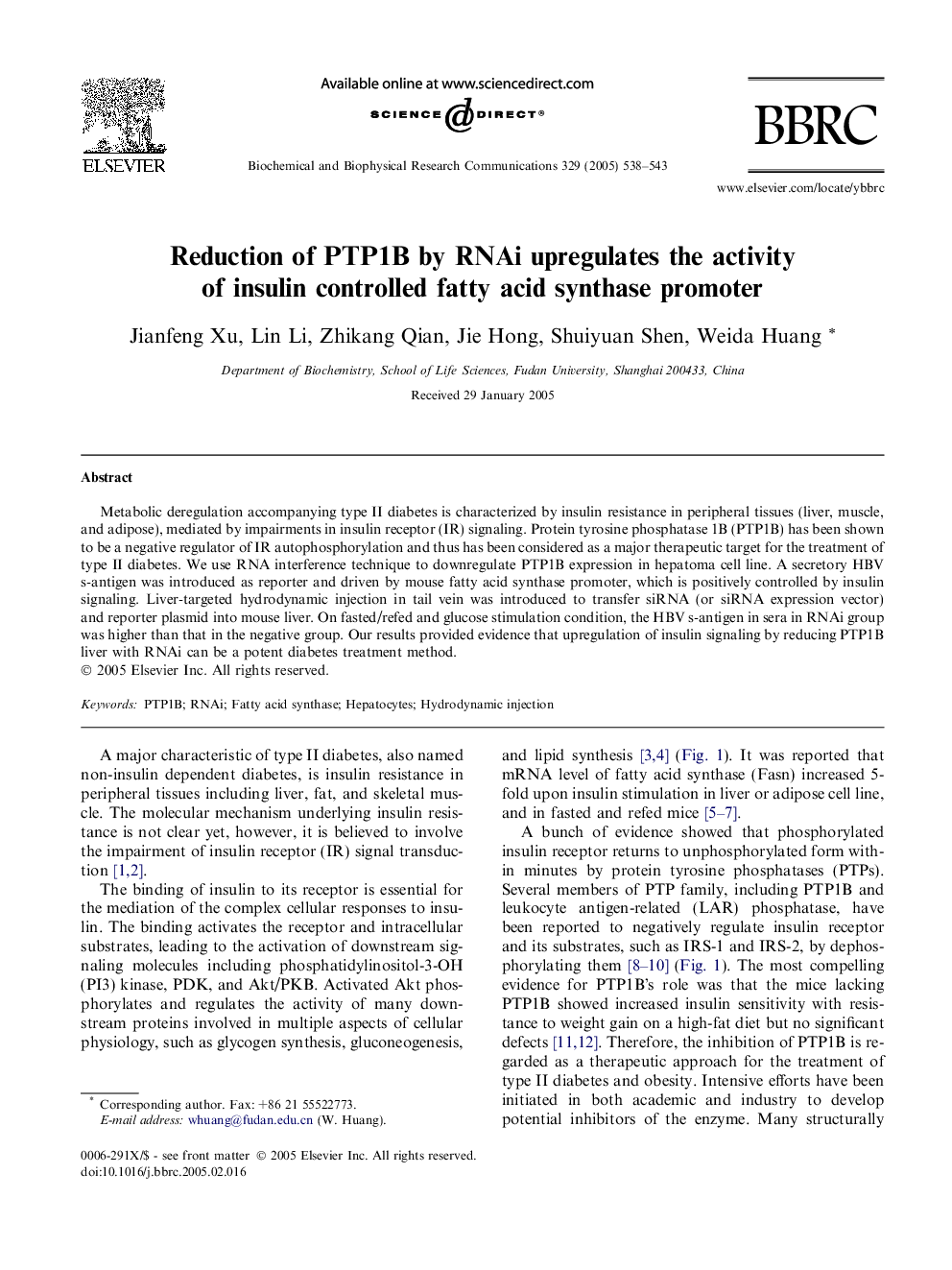| Article ID | Journal | Published Year | Pages | File Type |
|---|---|---|---|---|
| 10770719 | Biochemical and Biophysical Research Communications | 2005 | 6 Pages |
Abstract
Metabolic deregulation accompanying type II diabetes is characterized by insulin resistance in peripheral tissues (liver, muscle, and adipose), mediated by impairments in insulin receptor (IR) signaling. Protein tyrosine phosphatase 1B (PTP1B) has been shown to be a negative regulator of IR autophosphorylation and thus has been considered as a major therapeutic target for the treatment of type II diabetes. We use RNA interference technique to downregulate PTP1B expression in hepatoma cell line. A secretory HBV s-antigen was introduced as reporter and driven by mouse fatty acid synthase promoter, which is positively controlled by insulin signaling. Liver-targeted hydrodynamic injection in tail vein was introduced to transfer siRNA (or siRNA expression vector) and reporter plasmid into mouse liver. On fasted/refed and glucose stimulation condition, the HBV s-antigen in sera in RNAi group was higher than that in the negative group. Our results provided evidence that upregulation of insulin signaling by reducing PTP1B liver with RNAi can be a potent diabetes treatment method.
Related Topics
Life Sciences
Biochemistry, Genetics and Molecular Biology
Biochemistry
Authors
Jianfeng Xu, Lin Li, Zhikang Qian, Jie Hong, Shuiyuan Shen, Weida Huang,
